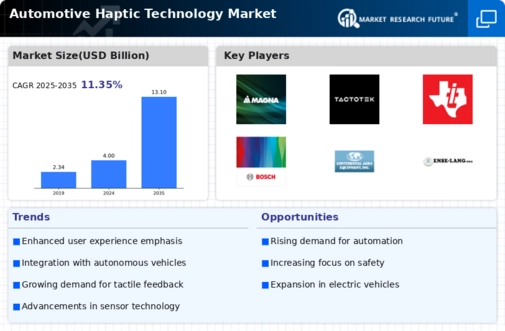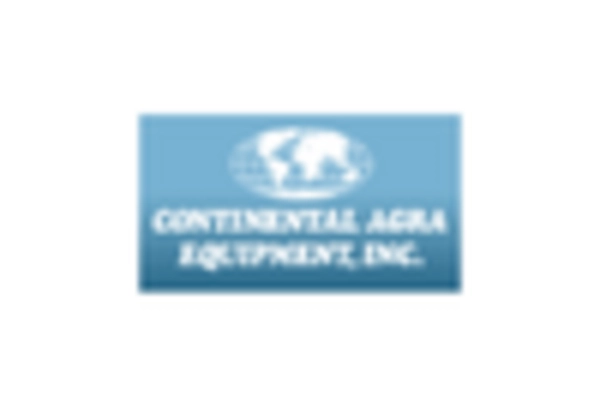Enhanced Safety Features
Enhanced safety features are a driving force in the Automotive Haptic Technology Market. As safety regulations become more stringent, automakers are compelled to adopt technologies that improve driver awareness and reduce accidents. Haptic feedback systems serve as an effective means of alerting drivers to potential hazards, thereby enhancing overall safety. For instance, tactile alerts can be employed to signal when a driver is distracted or when a vehicle is approaching a dangerous situation. Recent statistics indicate that the implementation of such technologies can lead to a measurable decrease in accident rates. As a result, the Automotive Haptic Technology Market is likely to see increased investment in safety-oriented haptic solutions, as manufacturers strive to meet regulatory requirements and consumer expectations for safer vehicles.
Personalization of User Interfaces
The personalization of user interfaces in vehicles is emerging as a crucial driver within the Automotive Haptic Technology Market. As consumers increasingly demand tailored experiences, automakers are focusing on integrating haptic feedback into infotainment systems and controls. This technology allows for customizable tactile responses, enabling drivers to adjust settings according to their preferences. Market data indicates that the demand for personalized vehicle experiences is on the rise, with a notable percentage of consumers expressing interest in advanced interface technologies. By incorporating haptic feedback, manufacturers can enhance user satisfaction and engagement, thereby fostering brand loyalty. The Automotive Haptic Technology Market stands to gain from this trend, as it aligns with the broader movement towards user-centric design in the automotive sector.
Focus on Electric and Autonomous Vehicles
The growing focus on electric and autonomous vehicles is significantly influencing the Automotive Haptic Technology Market. As the automotive landscape shifts towards electrification and automation, the need for innovative interaction methods becomes paramount. Haptic technology offers a unique solution by providing drivers with tactile feedback that enhances situational awareness and control. This is particularly relevant in autonomous vehicles, where traditional visual and auditory cues may not suffice. Market analysis suggests that the electric vehicle segment is expected to witness substantial growth, with projections indicating a rise in sales figures over the next decade. Consequently, the Automotive Haptic Technology Market is likely to experience increased demand as manufacturers seek to integrate haptic solutions that complement the advanced features of electric and autonomous vehicles.
Growing Consumer Demand for Innovative Features
The growing consumer demand for innovative features is a significant driver in the Automotive Haptic Technology Market. As consumers become more tech-savvy, they increasingly seek vehicles equipped with cutting-edge technologies that enhance their driving experience. Haptic feedback systems provide a novel way to interact with vehicle controls, offering a more engaging and intuitive user experience. Market trends indicate that consumers are willing to pay a premium for vehicles that incorporate advanced technologies, including haptic interfaces. This shift in consumer preferences is prompting automakers to invest in research and development to create vehicles that meet these expectations. Consequently, the Automotive Haptic Technology Market is poised for growth as manufacturers respond to the demand for innovative and user-friendly features.
Integration with Advanced Driver Assistance Systems
The integration of haptic technology with Advanced Driver Assistance Systems (ADAS) is a pivotal driver in the Automotive Haptic Technology Market. As vehicles increasingly incorporate ADAS features, the demand for tactile feedback mechanisms rises. Haptic feedback enhances user interaction by providing physical sensations that alert drivers to critical information, such as lane departure warnings or collision alerts. This integration not only improves safety but also enhances the overall driving experience. According to recent data, the ADAS market is projected to grow significantly, with estimates suggesting a compound annual growth rate of over 10% in the coming years. Consequently, the Automotive Haptic Technology Market is likely to benefit from this trend, as manufacturers seek to create more intuitive and responsive systems that cater to the evolving needs of drivers.
















Leave a Comment